Whaaat?! Bhindi? Why would anyone put that in their hair…
In fact, it’s used by Rastafarians to make their dreadlocks and keep them healthy. Okra is one of numerous natural items that contain mucilage, which is the slimy stuff you must be familiar with when it’s cooked. Mucilage is good for the skin and hair, and even for your gut health. The reason I was even looking this into was because I’ve been trying to find a way to put less chemicals into my system. And I definitely see an improvement in the quality of my skin and hair since.
Okra’s also high in Vitamins A & C, folic acid, calcium, zinc, including biotin, all of which make it incredibly nourishing for the hair. That’s probably why it’s been used as an ingredient in various high end products including a conditioner by Lush. All this means it can be used in different ways to treat and condition hair – as a rinse-out conditioner, leave-in, de-tangler or even as a hair gel as it gives excellent curl definition. The best part is that it doesn’t have a weird smell, like many natural things you may be using in your hair already. It actually doesn’t have any noticeable smell.
So in case you’re in a really experimental mood, or just fed up with the same old stuff, take a look! I’m going to show you how to make a general conditioner using bhindi, with tweaks to adapt it to your needs.
INGREDIENTS (BASIC RECIPE)
- 6-8 okras, chopped or sliced length-wise
- 1 ½ cups water
- 1-2 tsp oil (I used sesame this time, you can also use grape seed oil, almond oil, coconut oil etc)
OPTIONAL ADD-ONS
- Aloe vera gel
- honey
METHOD
Boil the okra in water and then simmer for anywhere between 15-30 minutes depending on whether you want a thick or thin mixture. Bear in mind it will thicken a bit more when you cool it. As a rinse out conditioner, you may want it thicker, as a leave-in thinner is better.
When it reaches the desired consistency, set aside to cool just enough to be strained through a mesh strainer. If you wait for it to cool too much it may get too thick and be difficult to strain. Pour into a blender and add the oil, then blend on low setting for a few minutes.
Your conditioner is now ready to use! If you want you can add a table spoon each of honey and aloevera gel when blending for extra nourishment.
Or you can divide it into 2 portions and add more aloevera gel to bring it to a creamy consistency. It will look just like a hair styling cream and can be used as one. As I said earlier it gives great curl-definition. Here’s the finished product, using the basic recipe. Looks like a real conditioner, eh! Shake well before every use.
RESULTS
The humble bhindi worked great for giving my hair volume and bounce. And definitely softer, shinier hair! It was looking quite thin since some major shedding last year, but just one application of this actually made it look thicker. The first picture was about a month ago. The second is taken just after the treatment. I think there’s a huge difference. Sorry about the difference in lighting. Both are taken without a flash though.
PRECAUTIONS
Since this is a natural concoction with no preservatives, it should be refrigerated and used within 7-10 days. Do throw it out if it starts to smell funky. And of course, don’t use it if you happen to be allergic to okra.
Editor’s Note: So, have you ever tried to use okra for hair? I sure never did! Never even thought it would be possible. Thanks a lot for sharing this with us, Nayantara!
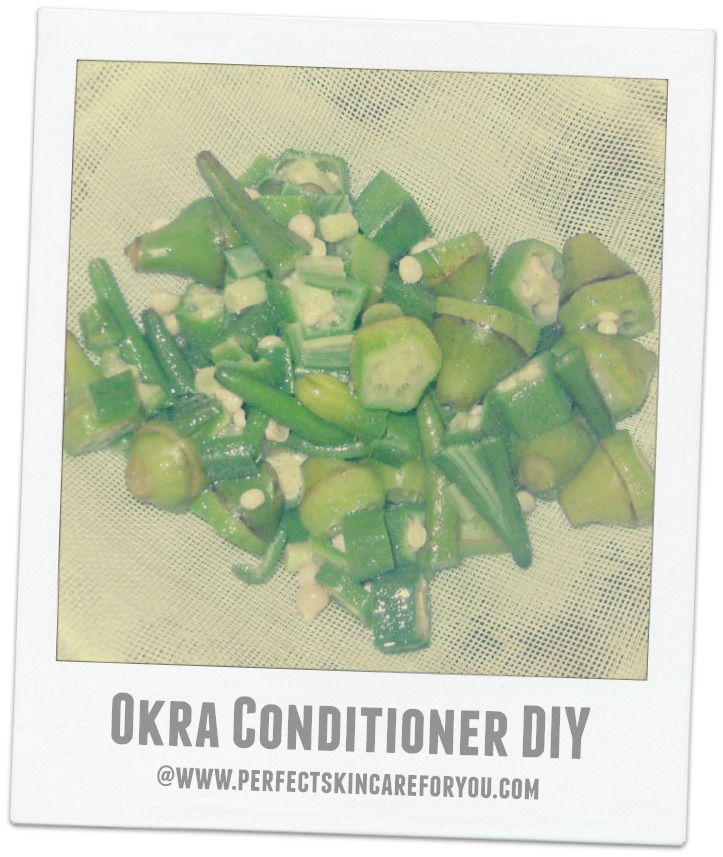
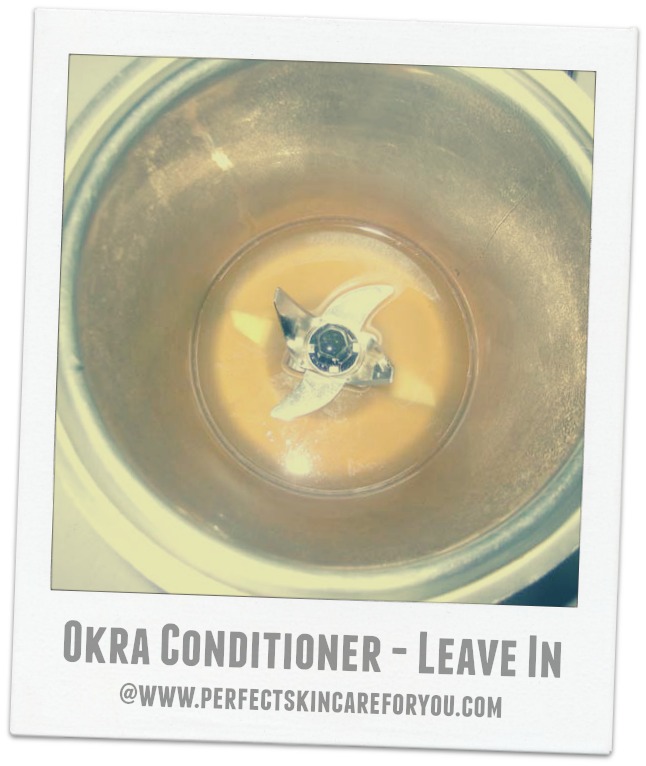
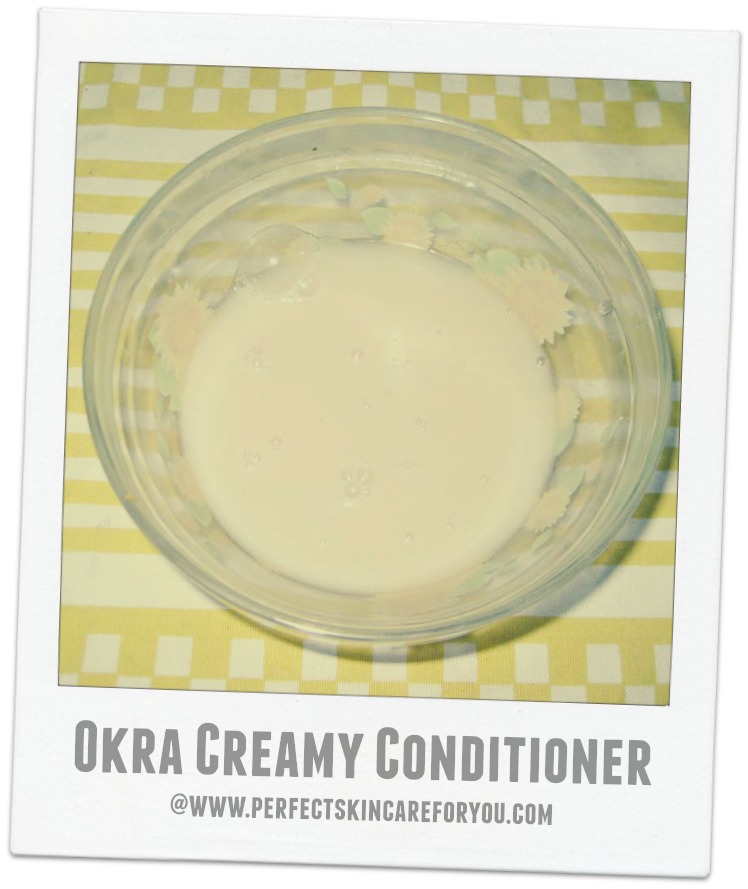
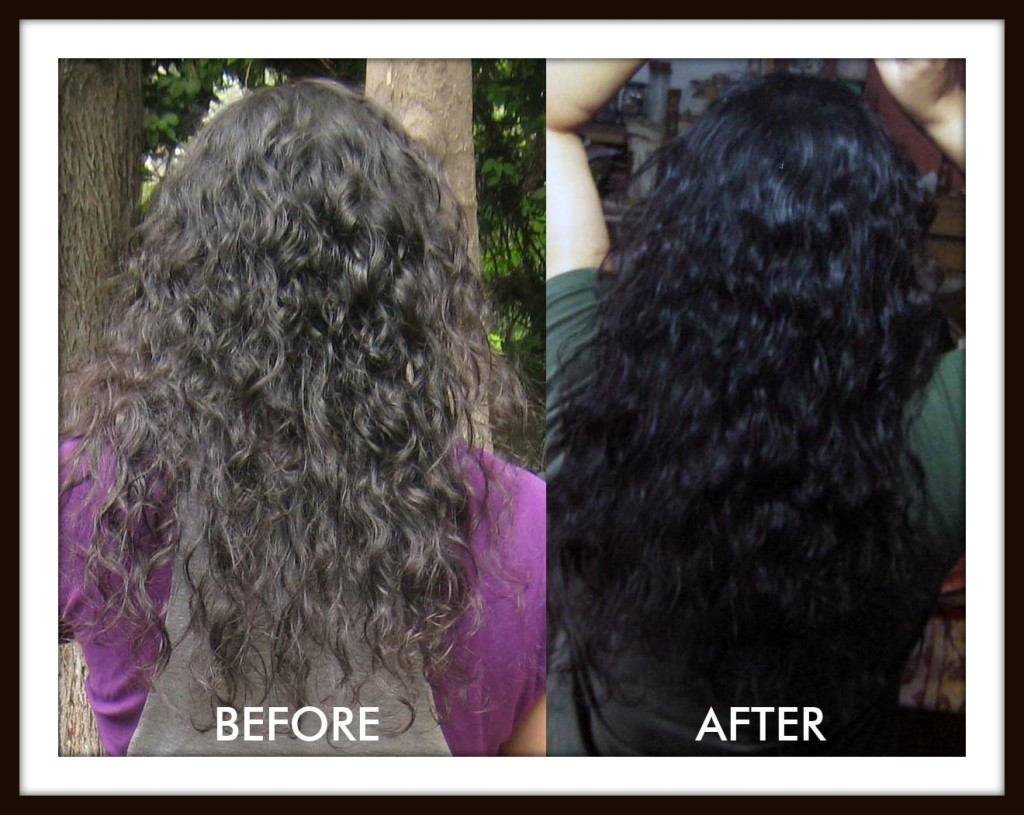
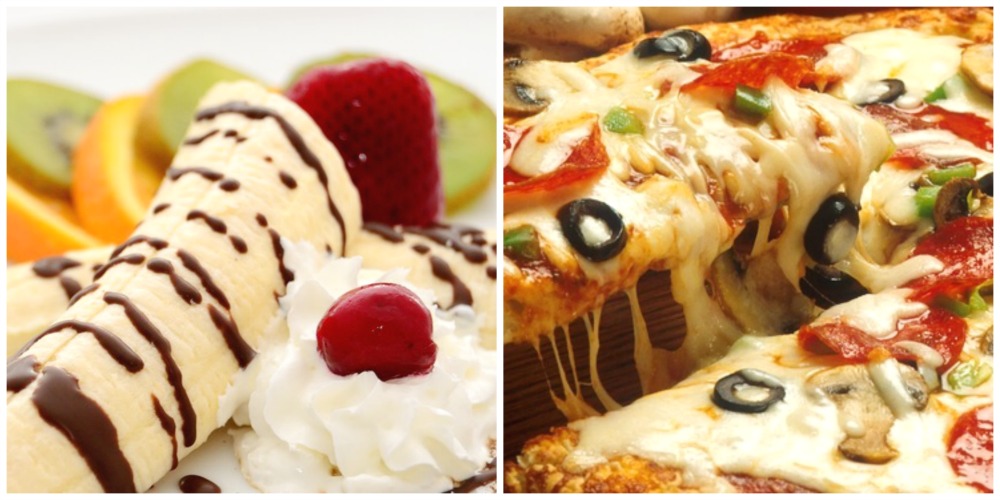

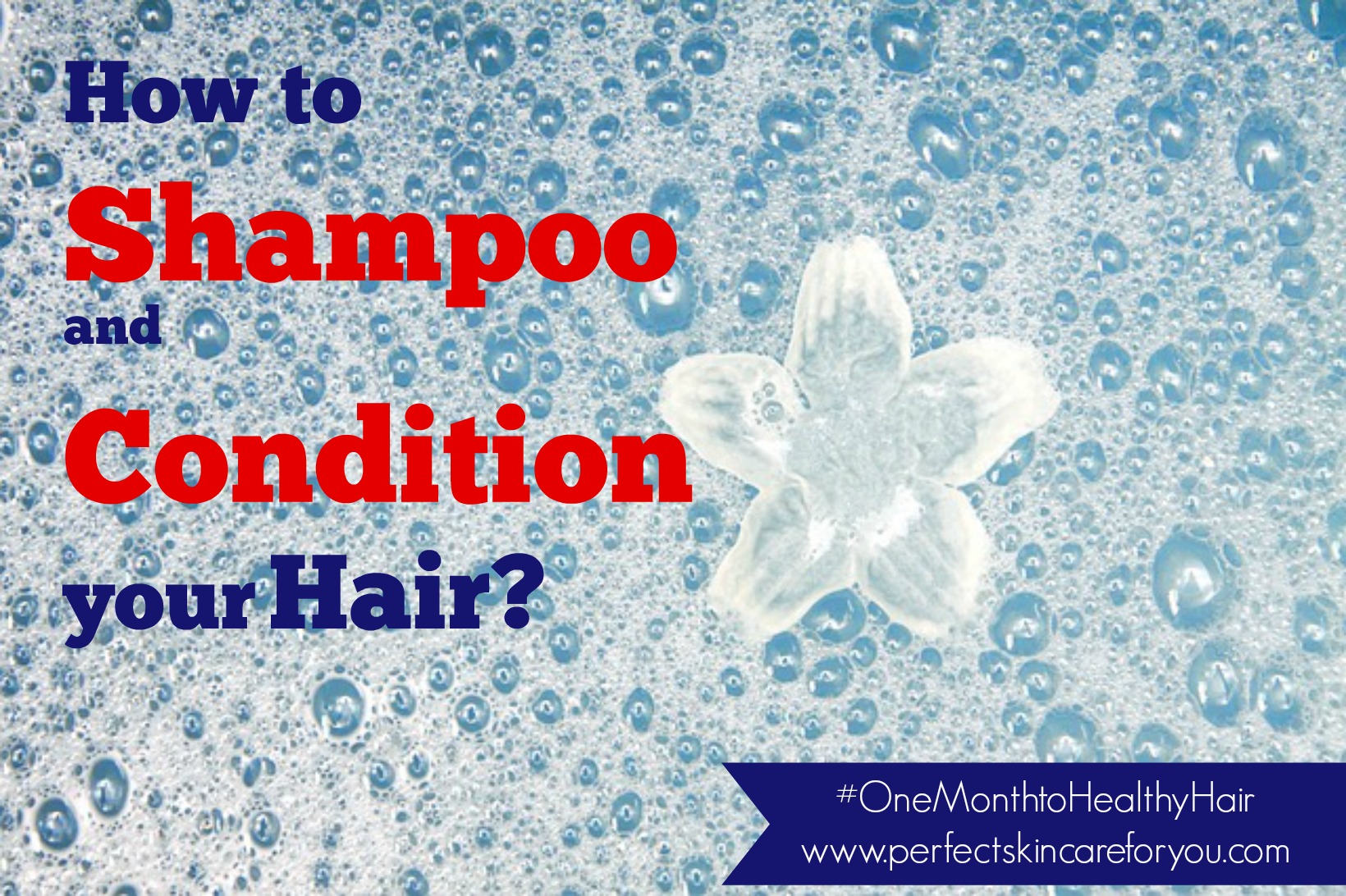
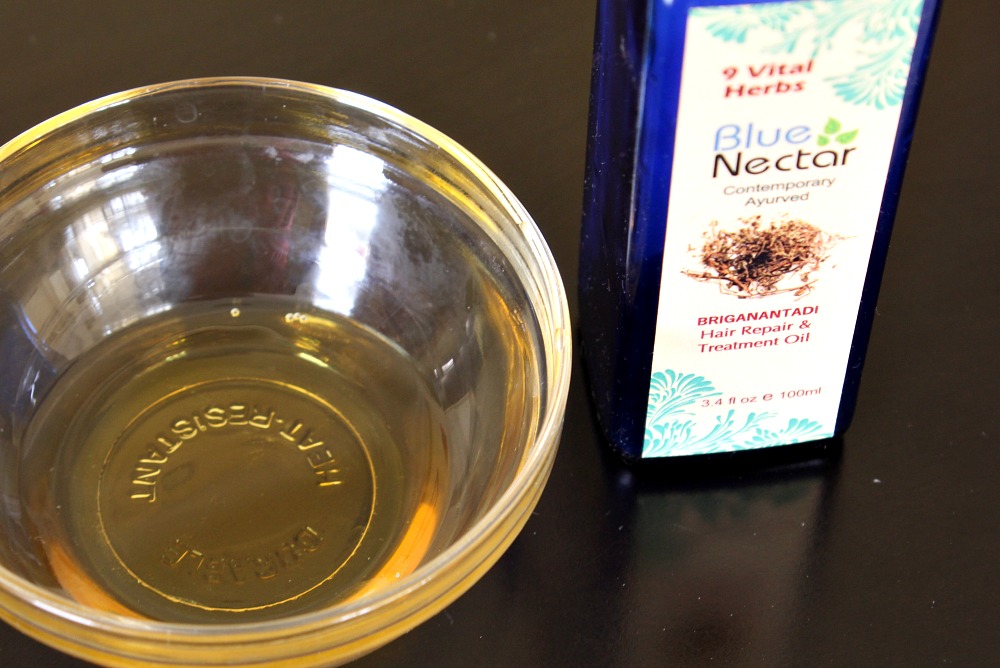


Its very great and easily made Natural Hair conditioner with ingredient more significantly available and affordable way to make. Thank you !
Nayantara.
Bhindi for hair. Never ever thought about it even in my wildest dream! It was really like okra for hair Huh??
But I would say would love to try this out for my hair as I have almost lifeless wavy hair .
do let us know how it went for you then when you try it out 🙂
Wow…Never even imagined putting okra in hair.Wonderful post..But does t leave a slimy feeling over hair after use?
good question! will have to ask Nayantara about it 🙂
Hi, yes, bhindi like methi does have a slimy feel to it, which reduces a bit with oil added. But once washed/ rinsed out, your hair will feel perfectly clean. If you use it as a leave-in gel, it will not feel slimy once it dries, it will give a ‘hold’ to your hair in the same way as commercial gels do. In fact it contains a form of cellulose that is similar in structure to those used in most gels.
Wow great DIY post but then i think it wont work on my oily and limp tresses 🙁 my hair ends are dry only!!
hey, glad you liked it! maybe you can try making it with less oil added to it and use it only on the ends of your hair- below shoulders?
Hmm dats a great idea!! thank you 🙂
Great writeup I will try it on my African hair, it easily tangles.
Thank you Adebanjo 🙂 I hear it works great on kinky curly hair- types 3b,c – 4’s as well. I also like to use it as a leave-in instead of gel and it gives good hold for my curls with a lot of shine and softness and no crunchiness. It works as a good detangler as well.
Hello Nayantara 🙂
I had heard of the benefits of okra for hair but never read a fully-fledged DIY with pictures on the same. Thanks a lto for it 🙂
I’ve a few queries though.
1. I use a homemade hair pack of curd+ milk+ methi once every week. Can I use it after washing it off in lieu of a conditioner?
2. Does one need to simply rinse it out or use a shmapoo to wash it?
3. Will this conocoction harden after cooling?
4. Once sesame oil and natural aloe vera gel is added to it and blended, will the mixture be fluffy or thicken? Since you’ve said that once it cools, it’ll thicken.
Thanks and have a nice day 🙂
Hi there Nidhi, glad you enjoyed the post. To answer your questions-
1. Okra is used to cleanse hair as well. Whether you can use it depends on whether your hair is oily or dry. I suspect it may not be enough to wash out the greasiness of curd and milk, unless your hair is dry/ damaged.
2. I use this like a regular conditioner after shampooing and simply rinse out with water after.
3. This does not harden after cooling
4. The thickness of the mixture will depend on the concentration of bhindi to water, as well as how long you simmer it, the longer you leave it to simmer, the thicker it gets.
However this will not be a true emulsion (like commercial products) it does tend to separate over a few days.
I have been experimenting with adding 1-2 tsp arrowroot powder to the strained mixture to thicken it up further and bring the consistency close to a commercial conditioner.
Thanks a lot Nayantara for such a quick reply 🙂 Shows your dedication towards the blog!
What’s arrowroot powder(Hindi name)? Also, my final question is whether it is suitable for straight hair since you’ve mentioned in one of the comments above that it is great for curly hair? I hope it won’t make my straight hair curly or too wavy. I don’t mean that these hair types aren’t beautiful or desirable but to each his own 🙂
You’re most welcome- haircare is one of my little obsessions!
I’m not aware of the Hindi name for arrowroot, but it’s usually found in the baking section of supermarkets. It’s a thickening agent like cornflour, but better.
This will not make your hair curly unless you style it that way, it will help your hair to stay in whichever way you style it for a longer time and prevent frizzies and fly-aways.
So if you use some in your hair when damp and then comb it out straight, even without the use of heat, it will hold that style. Since your hair is naturally straight, it will enhance the straightness, if that makes any sense…
Hope that helps!
Hi, for some reason when I blend this up it does not become creamy. It becomes a whitish color but almost becomes watery. I’m not sure what I am doing wrong.
Hi! I’ve mentioned in one of the comments above that I’ve been working with tweaking the recipe. To get a creamy mixture (like a commercial conditioner), this would need to be a true emulsion, which requires the use of emulsifying agents. However, I’ve found that using arrowroot powder gives it enough thickness to allow for a somewhat stable ‘creamy’ consistency.
After straining out the okra, allow the liquid to cool. Sprinkle 2-3 tsp arrowroot powder evenly across, per 1 cup of liquid. Use a whisk to stir it in and try and make sure no clumps remain. Reheat the liquid on a low flame till it thickens to your liking. It will also thicken more as it cools. You can add the oil while its heating and mix it in. Once it cools down again you can add in other ingredients like aloe vera/ honey. Now either put it in the blender or use a hand held electric whisk to whip it up. you should get a fairly creamy mixture now. Play around with the quantity of arrowroot powder according to how thick you like it. If you’re into cooking, this is pretty similar to a classic white sauce!
Hope this helps! Do let me know it turns out the way you like 🙂
wow! that’s a twist I like to recipe. infact, arrowroot powder is also great to remove oil from the scalp and hair so works well. I think this can alone be used to cleanse the hair, if its not too dirty.
Hey Swati! It wouldn’t really work like that! Arrowroot in powder form absorbs excess oils from the hair but when added to a water base and heated it acts as a gelling agent, which would have conditioning rather than cleansing properties, so quite different!
Oh! Hmm….so it just acts as the emulsifier.we can even add edible gelatin I guess in that case?
Yup Swati! Gelatin could work as well, though it’s usually non-veg derived, so not everyone would like to use it. Also, it solidifies in the refrigerator but liquefies at room temp, so consistency may keep changing.
Hello Nayantara
It’s a wonderful recipe. I’ll surely try this out. I have some queries regarding it. Please solve them
1) I use a hair pack comprising fenugreek powder, curd and amla powder. Can I add this okra+ aloe vera mix to it and apply the whole mixture to my hair?
2) I have straight hair. Does this make ones hair curly or wavy?
3) I prefer keeping my hair pack for at least 2 hours. Will it be fine if I keep the entire concoction for the same time duration?
Thank you and have a great year 🙂 Happy new year 🙂
Thank you Nithya 🙂
You can certainly add okra + aloe vera to your mixture.
This will not make straight hair wavy, so you don’t have to worry.
You can keep the pack for 2 hrs but I remember reading somewhere that the maximum absorption of nutrients from deep conditioner/ hair mask to the hair occurs in 30 mins, so in general 2 hrs is not really needed.
And a happy new year to you too. Take care!
Does it leave flakes, I know flax seed gel does.
Hi Nicole, I haven’t had a problem with flaking from this or from flax seed gel, however some of the commercial aloe gels do leave flakes, so I don’t mix those in.
Awesome diy post.Been an African, I use it a lot on my hair as leave in,detangler and styler.I love the slip of okra gel since marshmallow root and slippery elm are very expensive where I live in Africa.